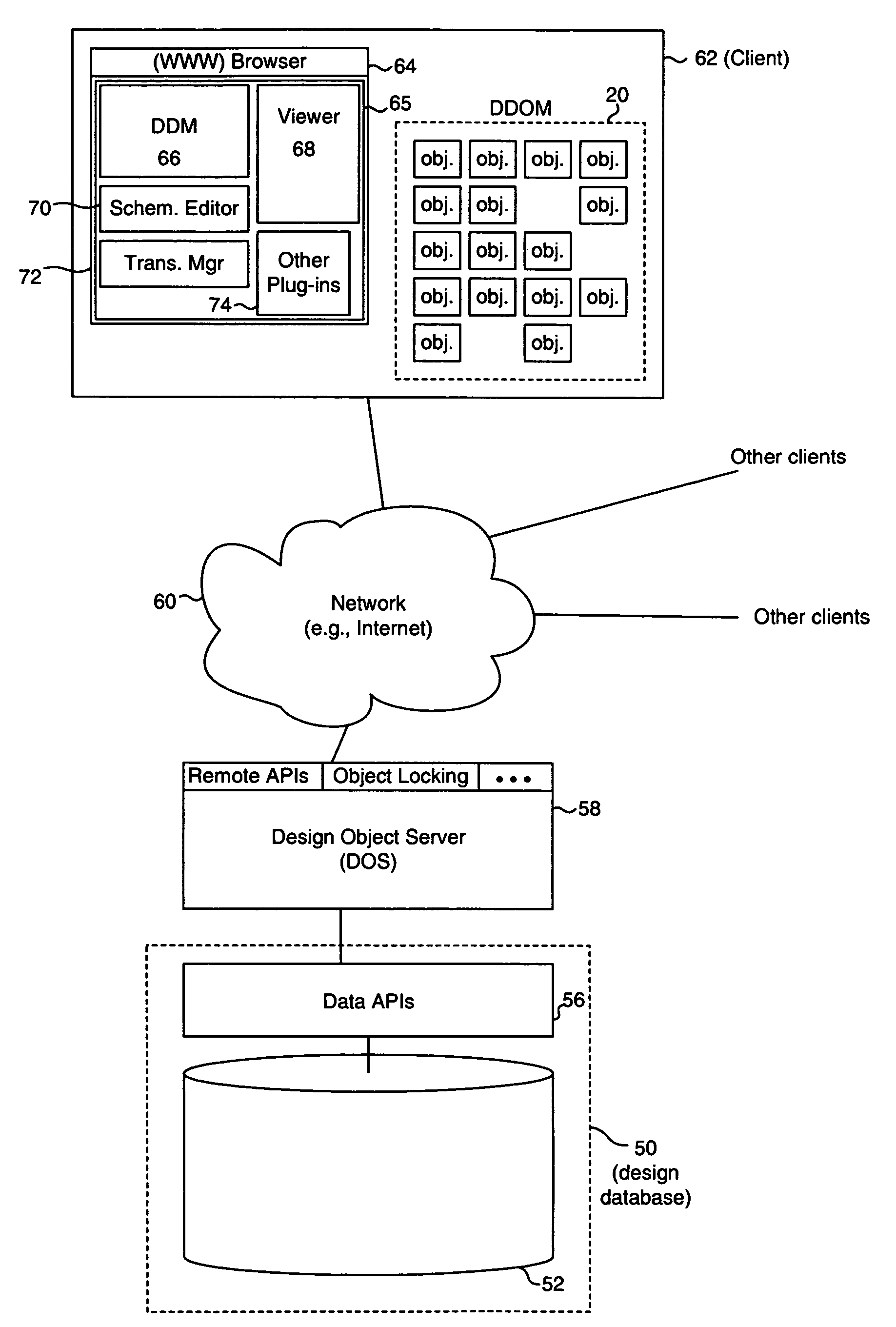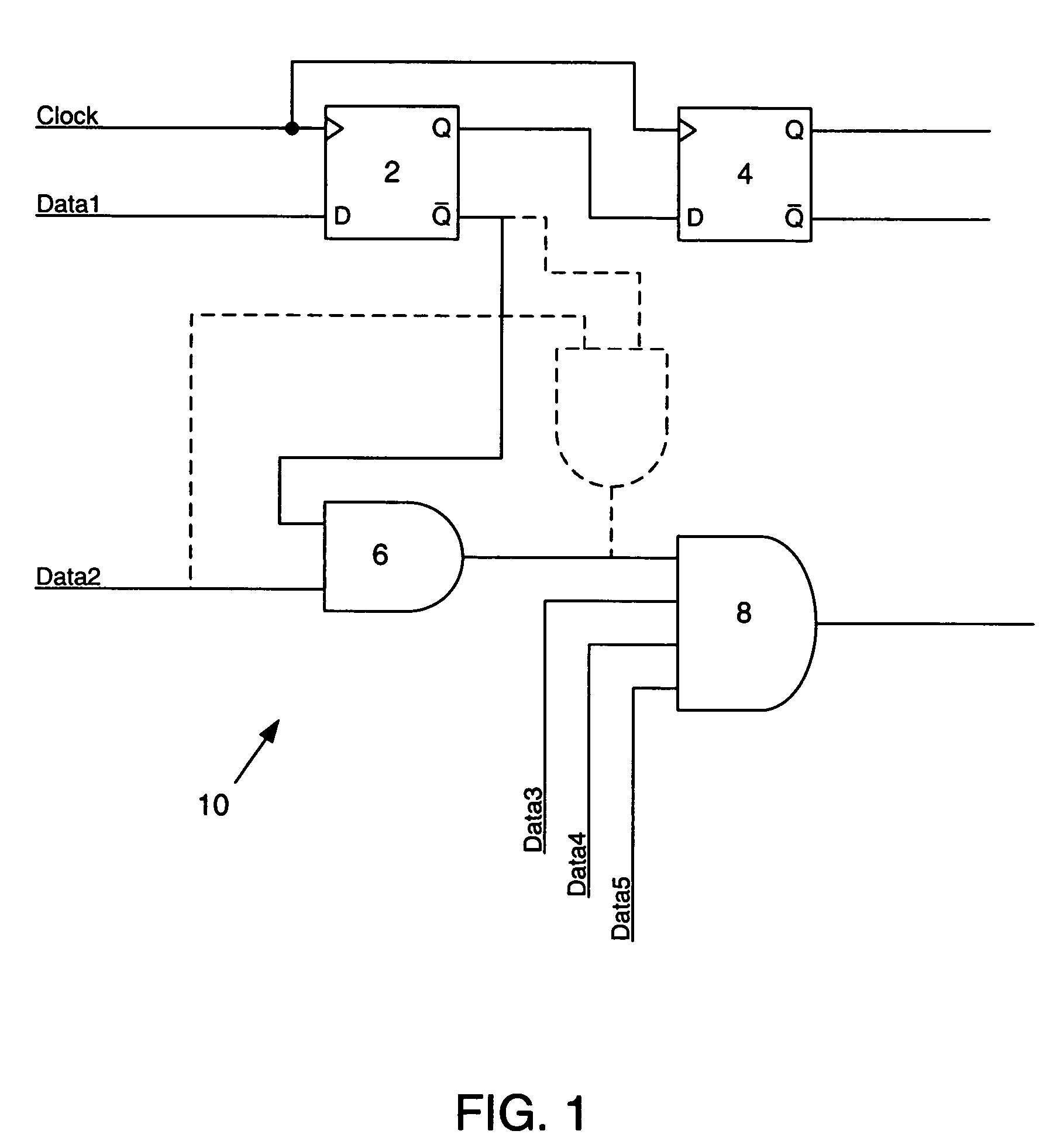Distributed electronic design automation environment
a technology of electronic design and automation environment, applied in the direction of instruments, cad networks, cad techniques, etc., can solve the problems of difficult or impossible representation of parts on a single sheet of a schematic diagram, the difficulty of electronic design approach, and the loss of schematic valu
- Summary
- Abstract
- Description
- Claims
- Application Information
AI Technical Summary
Benefits of technology
Problems solved by technology
Method used
Image
Examples
Embodiment Construction
[0052]Connectivity-Centric Data Model
[0053]In many parts of the design process (in both the front and back ends), connectivity between circuit elements is more critical than a particular graphical representation of the circuit. FIG. 1, a schematic diagram for a portion of a hypothetical circuit 10, illustrates this point. Included in FIG. 1 are two flip-flops 2 and 4, an AND gate 6 and a four-way AND gate 8. Also shown in FIG. 1 are interconnections between inputs and outputs of these circuit elements, as well as connections to various signal lines (e.g., “Clock,”“Data1,” etc.) connected to other circuit elements not shown in FIG. 1. Although a schematic such as FIG. 1 may assist in visualizing signal flows and in understanding other aspects of a circuit design, the specific graphical form and arrangement of circuit element symbols is generally not critical to a front end designer. For example, the logical functionality of the circuit in FIG. 1 is unaffected if AND gate 6 is reorien...
PUM
 Login to View More
Login to View More Abstract
Description
Claims
Application Information
 Login to View More
Login to View More - R&D
- Intellectual Property
- Life Sciences
- Materials
- Tech Scout
- Unparalleled Data Quality
- Higher Quality Content
- 60% Fewer Hallucinations
Browse by: Latest US Patents, China's latest patents, Technical Efficacy Thesaurus, Application Domain, Technology Topic, Popular Technical Reports.
© 2025 PatSnap. All rights reserved.Legal|Privacy policy|Modern Slavery Act Transparency Statement|Sitemap|About US| Contact US: help@patsnap.com



